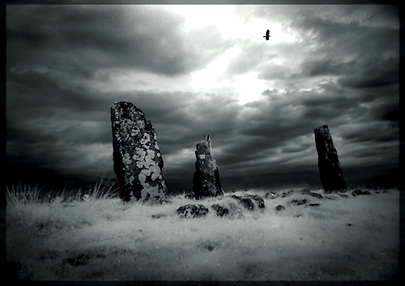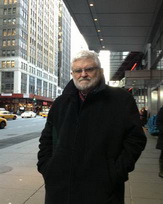Picture
source: http://fc00.deviantart.net/fs11/i/2006/209/4/2/Glengorm_Standing_Stones_by_ArwensGrace.jpg
All
round
Europe
there are circles of standing stones, some more complete than others. They date
back thousands of years, their construction, their purpose, a matter of much
conjecture. One thing is sure our ancestors were responsible for them and have
left us a remarkable heritage of their times.
But
in our age, they have lost meaning, a mere shadow in an open field season by
season, of what once was.
Across
those same European lands are the Christian cathedrals, magnificent
architectural statements of faith from a time much nearer our own. How they were
physically achieved has always fascinated me, but they were, and still are, a
testimony of faith.
That
was then, now is now; what’s changed? A great deal. We don’t deny the faith
of earlier generations by asking that question. Previous generations are the tap
root of our Christian experience. Indeed if we don’t ask questions about
change with honesty and integrity, our future is bleak.
In
Francis, Bishop of Rome, we have a man whose life experience is beyond this
European cultural model. He has brought with him a South American concept of
Church that is not steeped in this European mode of being Church. It is worth
remembering that only a quarter of the world’s catholic Christians are
resident in the European western culture.
By
the time that these few lines are posted the Synod of Bishops will have
concluded.
In
the Interim Document, the ‘relatio’,
issued at the mid-point of discussion, there was already evidence of tension.
The Tablet website mentions that
“A key
document from the bishops' Synod on the Family calling for the Church to make
radical changes to its pastoral approach to gays, divorce and remarried and
those in civil marriages has been criticised by Cardinal George Pell as
“tendentious and incomplete”.
In
attempting to examine the experience of Christians in our time and to draw faith
from it, there was always bound to be a contradiction with the clear cut,
defined views of earlier times, not essentially on matters of doctrine but of
how doctrine is experienced in our age.
Of
course, we must remember that this document is only a staging post in an
on-going discussion and that the Synod of October 2014 is a precursor to the
General Synod next year. The Church
is an act of faith and its members, living examples of faith in action.
That
is where the focus must be clear and sharp. Our faith in the person of Jesus and
our willingness to make the Gospel the sign post of our journey comes before
everything. If that means being realistic in our time for the sake of the
people, then that we must be.
No
longer does the gas lighter switch on the city lights in early evening as in
Eliot’s poem Preludes: “…and at the corner of the street, a lonely
cab horse steams and stamps. Then the lighting of the lamps”. We live in a
rapidly changing world, the cab horses have gone from
London
streets, along with the gas lamps. It is no wonder that such a changing world
is reflected in the discussion at the Synod gathering. Some things last, others
are useful while they last. We have to learn to distinguish which is which.
The
doctrine we hold must be a life force for our times, otherwise it (and we) will
become ossified like ancient stones and that will help no-one.
The
picture that heads this piece shows a single bird hovering in the sunlight
revealed by cloud breaking over stones. It might not be too fanciful to regard
that image as symbolic of the Spirit renewing the Church, continuing the
teaching of the Second Vatican Council in our midst.
The
few lines below were written before this posting was prepared, but they nicely
reflect the tone of what I have been trying to say.
Mute Memorials
In
the field, a circle of stones,
carefully
placed, their feet
hidden
in the overgrowth of uncut grass,
their rough grey surface etched with
green
and yellow lichen.
Gathered
for a purpose now long lost
they
have stood erect beneath
countless
Winter storms, later to be
warmed
under a Summer sun,
mute
memorials to a distant dream.
We
must not let the Church that is our home, become a mute memorial to a distant
dream. Like Francis of Assisi all those years ago, we too are called to rebuild
our Church, here in the 21st Century.
END
---------------

